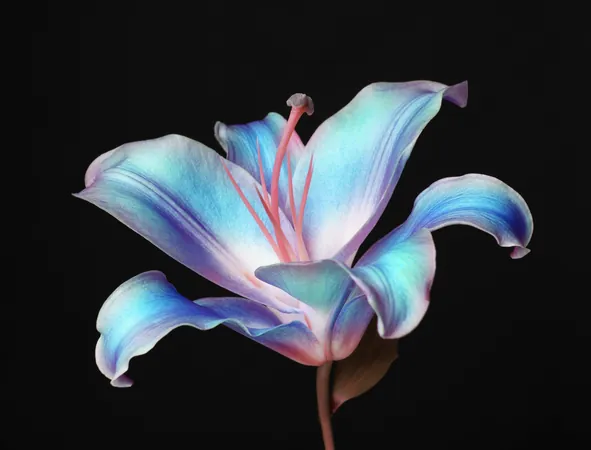
The Secret Light of Life: What Happens When We Fade?
2025-05-18
Author: Sarah
Ever wondered if there’s more to us than just the visible? While we often think of light as a vibrant force—like the flickering flames of a campfire or the radiant sun—there exists a hidden glow within all living beings.
The Mysterious Glow: Ultraweak Photon Emission (UPE)
This subtle phenomenon, known as ultraweak photon emission (UPE), is an unwitnessed part of our biology. It’s not the flashy bioluminescence you see in fireflies, but rather an almost imperceptible light that's a natural byproduct of our metabolic processes. A recent study from the University of Calgary has plunged deep into the significance of this hidden luminescence.
A Tale of Life and Death
Researchers probed into UPE by comparing the light emissions of living and recently deceased mice. Using high-tech imaging tools, they found living mice emitted a noticeable glow, whereas their deceased counterparts shone merely as dim shadows. Even when both were kept at a consistent body temperature, the living ones displayed significantly more UPE.
This subtle whisper of light may not seem like much, but it could symbolize the internal rhythm of life, hinting that UPE is intricately linked to vital biological processes that persist as long as life does.
Plants: Nature’s Stress Signals
But it’s not just animals that glow; plants do too! The same study revealed that when subject to various stresses—temperature changes, injuries, or chemicals—plants responded by emitting more intense light from damaged areas. This could be nature's way of signaling distress.
The Chemistry of Light Produce
Consider your cells as bustling laboratories where countless reactions occur to sustain life. During stress conditions, the accumulation of reactive oxygen species (ROS) can lead to a surge in UPE. While ROS are crucial for cell signaling, they can also become harmful in excess, generating the conditions necessary for that faint glow.
Capturing the Invisible
To decipher these elusive emissions, scientists utilized specialized dark environments and high-tech cameras like Electron-Multiplying Charge-Coupled Device (EMCCD) cameras. In the stark silence of darkness, these cameras detected subtle changes in UPE related to temperature and stressors. Results illuminated how life appears to flicker out after death in mice, while specific plant areas sparkled in response to stress.
A Game-Changer for Diagnostics?
What if UPE could revolutionize medicine by serving as a non-invasive diagnostic tool? The distinctions observed between living and deceased mice could be the key to early disease detection. Imagine being able to monitor cellular stress hidden beneath the surface, revealing a body’s internal battles before visible symptoms arise.
The Intersection of Physics and Biology
UPE is not merely an idle occurrence; it blurs the line between physics and biology. It’s a silent language of life, offering intriguing insights into cellular activity and potential diagnostic capabilities. However, many questions linger: Why do certain cells glow more intensely than others? What triggers these emissions during stress?
Unlocking the Secrets of UPE
This groundbreaking study stirs more curiosity than answers. Scientists aim to unravel mysteries surrounding UPE, deciphering what prompts these fleeting illuminations in our cells. As research expands, our understanding of this hidden light could unveil crucial signs of biological activity, reshaping how we perceive life and health.
The revelations about ultraweak photon emission spark excitement in the scientific community. The obvious message? Even the faintest light might hold critical keys to understanding what it means to be alive.




 Brasil (PT)
Brasil (PT)
 Canada (EN)
Canada (EN)
 Chile (ES)
Chile (ES)
 Česko (CS)
Česko (CS)
 대한민국 (KO)
대한민국 (KO)
 España (ES)
España (ES)
 France (FR)
France (FR)
 Hong Kong (EN)
Hong Kong (EN)
 Italia (IT)
Italia (IT)
 日本 (JA)
日本 (JA)
 Magyarország (HU)
Magyarország (HU)
 Norge (NO)
Norge (NO)
 Polska (PL)
Polska (PL)
 Schweiz (DE)
Schweiz (DE)
 Singapore (EN)
Singapore (EN)
 Sverige (SV)
Sverige (SV)
 Suomi (FI)
Suomi (FI)
 Türkiye (TR)
Türkiye (TR)
 الإمارات العربية المتحدة (AR)
الإمارات العربية المتحدة (AR)